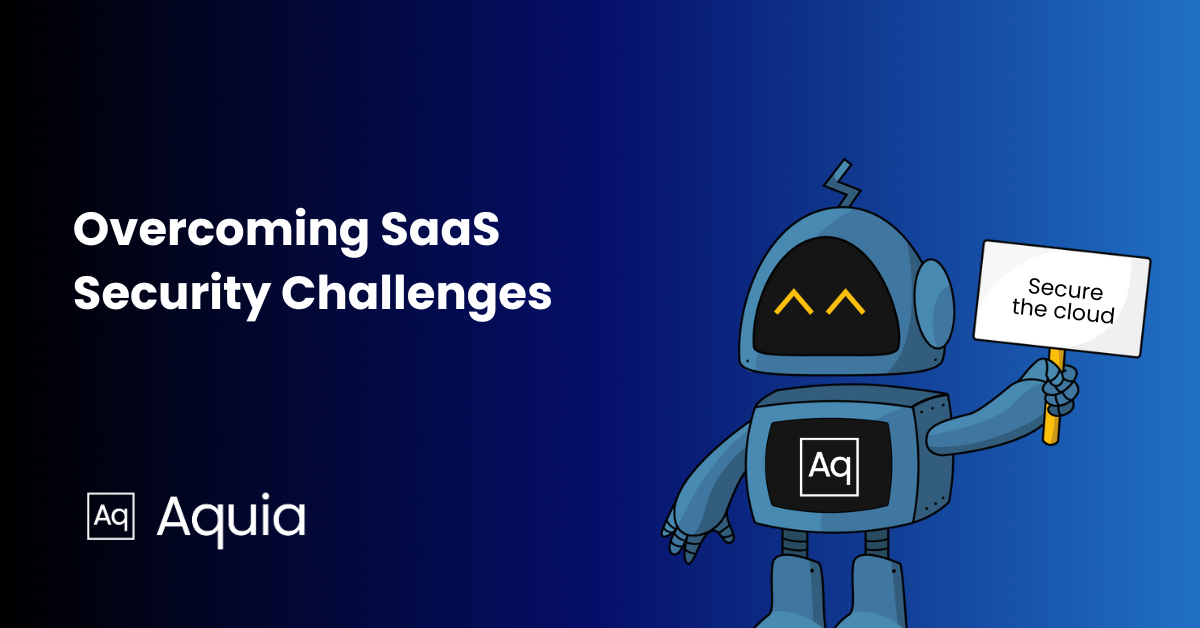The Top 4 SaaS Security Challenges and How To Overcome Them
Navigating the pitfalls of visibility, permissions, responsibility, and emerging threats.

Introduction
The widespread adoption of software-as-a-service (SaaS) applications continues to change how organizations operate. According to this report by BetterCloud, a staggering 85% of business apps will be SaaS-based by 2025. With the rapid migration to cloud services like Microsoft 365, Google Workspace, Slack, and Salesforce, organizations gain immense flexibility and collaboration capabilities. However, these new environments also introduce new and complex security risks that many companies are unprepared to handle.
Traditional on-premises security tools often fail to protect data and users across dispersed SaaS applications. Many organizations struggle to maintain visibility and control as more users, devices, workloads, and data transition to the cloud. Securing modern SaaS ecosystems requires rethinking outdated strategies and deploying solutions designed expressly for the cloud.
With the right approach, companies can adopt innovative SaaS applications to enhance productivity and collaboration while protecting their most critical data assets. Although securing the new SaaS landscape brings challenges, it is achievable by understanding the risks and responding with modern cloud-centric security strategies.
Lack of Visibility
One of the biggest roadblocks to securing SaaS is the lack of visibility into data and user activity. With many SaaS applications, security teams have limited monitoring capabilities and insights into potential threats. This prevents proactive hardening of the environment and makes investigating threats difficult after a breach.
To gain comprehensive visibility, organizations need solutions like SaaS security posture management (SSPM) designed specifically for cloud-based analytics. SSPM tools continuously analyze SaaS application configurations and user permissions. For example, they can detect over-permissive settings like external sharing turned on or risky role assignments.
SSPM should give security teams full visibility into data, users, devices, and misconfigurations across their entire SaaS ecosystem. A centralized view of the SaaS security posture allows vulnerabilities to be proactively remediated before they can be exploited. SSPM provides in-depth visibility that traditional cloud access security broker (CASB) solutions often lack.
With SSPM capabilities, organizations can uphold the shared responsibility model by monitoring configurations, activity patterns, and access. This cloud-native visibility is essential for securing modern SaaS environments. (Check out this webinar if you’re interested in learning more about how you can strengthen your cloud security with SSPM.)
Fractional Security Coverage
Point solutions like CASBs and cloud single sign-on only cover a fraction of the SaaS attack surface. For example, CASBs provide visibility into major SaaS apps but often lack coverage of lesser-known shadow IT and collaboration apps. This fractured view leaves gaps that attackers can exploit.
Organizations need a platform that provides complete coverage of their SaaS environment. A unified solution that combines CASB functionality with cloud single sign-on, zero trust network access, data loss prevention, and other layers will eliminate blind spots across all SaaS apps.
The Shared Responsibility Model Challenge
While SaaS providers secure the underlying infrastructure, customers are responsible for securing data, users, and configurations. However, without internal access, upholding this shared responsibility is difficult.
An inside-out approach to security is critical for organizations to uphold their end of the shared responsibility model. This means deploying SSPM tools for visibility alongside external monitoring of cloud APIs. With the full context of data, user behavior, and configurations, organizations can enforce granular policies to reduce their cloud attack surface.
Increasing SaaS Attacks
As more business-critical data and workflows move to SaaS, attackers are taking note. Account hijacking, insider threats, data exfiltration, and misconfigurations are all on the rise. Many legacy tools designed for on-premises environments cannot keep up with the growing sophistication of cloud-based attacks.
Organizations need platforms expressly designed to prevent modern SaaS threats. For example, emerging solutions from security providers focused exclusively on the SaaS landscape offer continuous risk monitoring, adaptive access controls, and automated policy tuning to address real-world attacks.
These products provide capabilities such as:
- Continuous analytics to detect high-risk user activities through signals like impossible travel, suspicious IP addresses, and anomalies.
- Automated remediation that programmatically fixes misconfigured settings, including improper external sharing and over-permissive roles.
- Adaptive access controls that update based on suspicious behaviors, connected app vulnerabilities, or changes in user risk.
Relying solely on legacy tools threatens to leave blind spots that sophisticated attackers can exploit within cloud-native environments. Modern SaaS-centric security platforms take evolving threats and the shared responsibility model into account
The Path Forward
Securing SaaS environments requires a fundamentally new approach: integrated platforms that provide complete visibility, uphold the shared responsibility model, and evolve to match real-world attacks. Piecemeal solutions leave gaps that compromise cloud data. With the proper strategy and tools, organizations can confidently embrace cloud applications knowing their data is secure.
If you are interested in learning more about securing SaaS workloads, please visit Aquia’s SaaS Governance page to explore cloud-native security solutions built for the unique needs of modern environments.
If you have any questions, or would like to discuss this topic in more detail, feel free to contact us and we would be happy to schedule some time to chat about how Aquia can help you and your organization.

